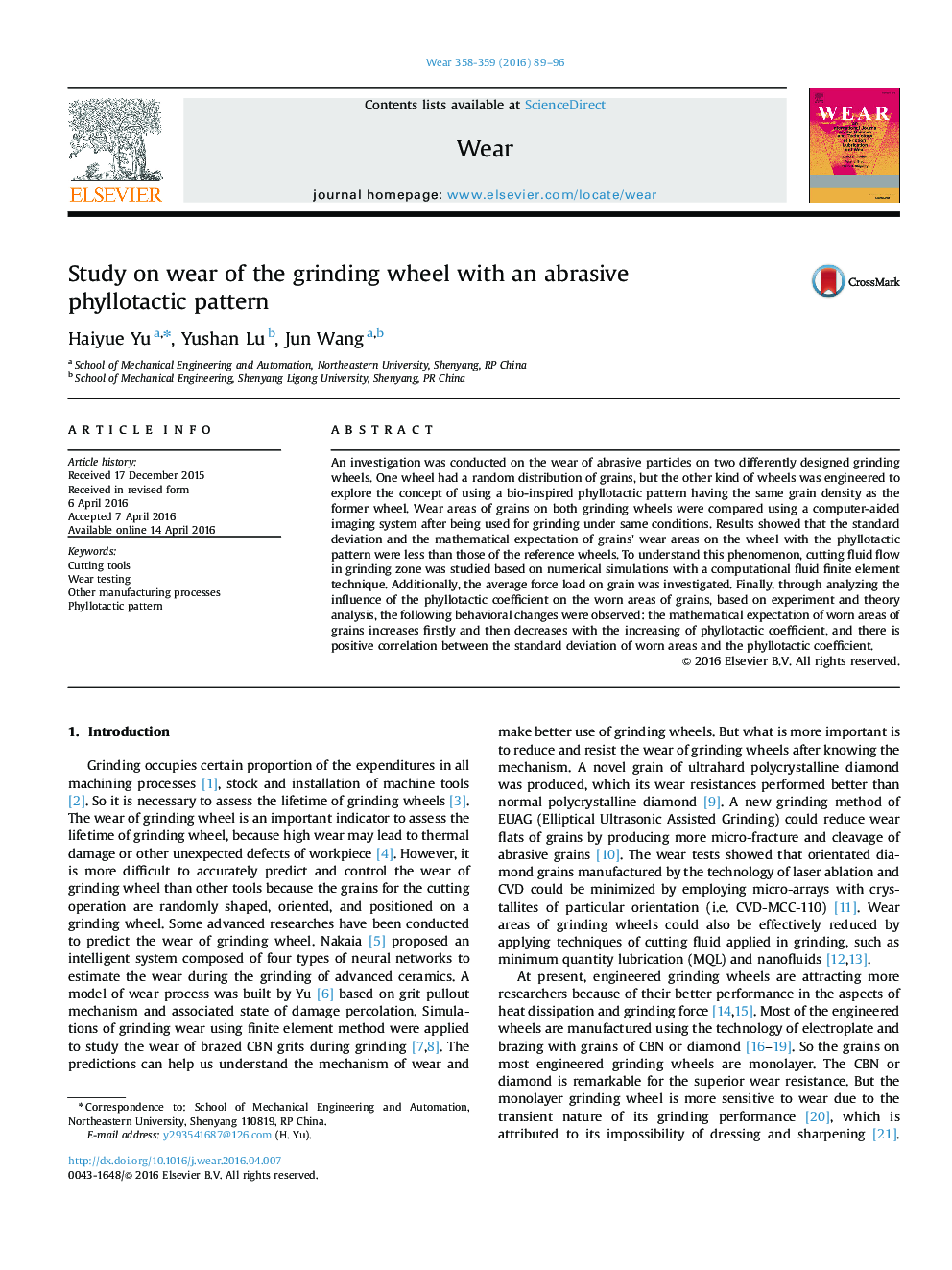| Article ID | Journal | Published Year | Pages | File Type |
|---|---|---|---|---|
| 616897 | Wear | 2016 | 8 Pages |
•A bionic grinding wheel is proposed.•A computer-aided imaging system is developed to detect the wear of grains.•There is a better antiwear property of the bionic grinding wheel.•The relationship between the wear and the phyllotactic coefficient is present.
An investigation was conducted on the wear of abrasive particles on two differently designed grinding wheels. One wheel had a random distribution of grains, but the other kind of wheels was engineered to explore the concept of using a bio-inspired phyllotactic pattern having the same grain density as the former wheel. Wear areas of grains on both grinding wheels were compared using a computer-aided imaging system after being used for grinding under same conditions. Results showed that the standard deviation and the mathematical expectation of grains׳ wear areas on the wheel with the phyllotactic pattern were less than those of the reference wheels. To understand this phenomenon, cutting fluid flow in grinding zone was studied based on numerical simulations with a computational fluid finite element technique. Additionally, the average force load on grain was investigated. Finally, through analyzing the influence of the phyllotactic coefficient on the worn areas of grains, based on experiment and theory analysis, the following behavioral changes were observed: the mathematical expectation of worn areas of grains increases firstly and then decreases with the increasing of phyllotactic coefficient, and there is positive correlation between the standard deviation of worn areas and the phyllotactic coefficient.
